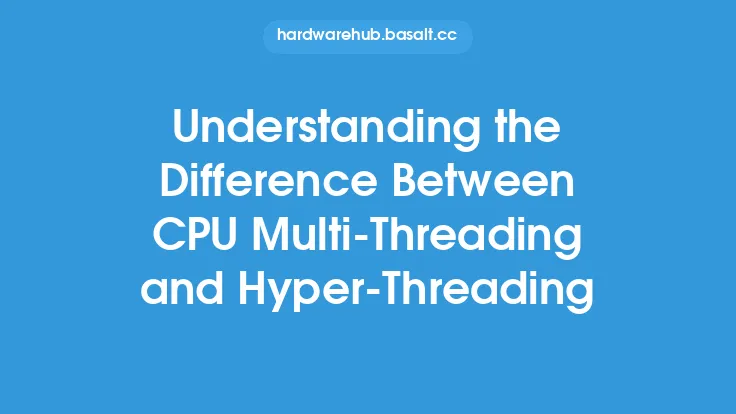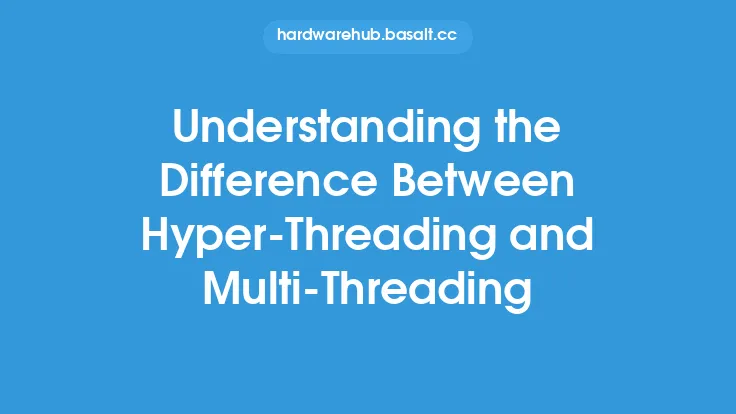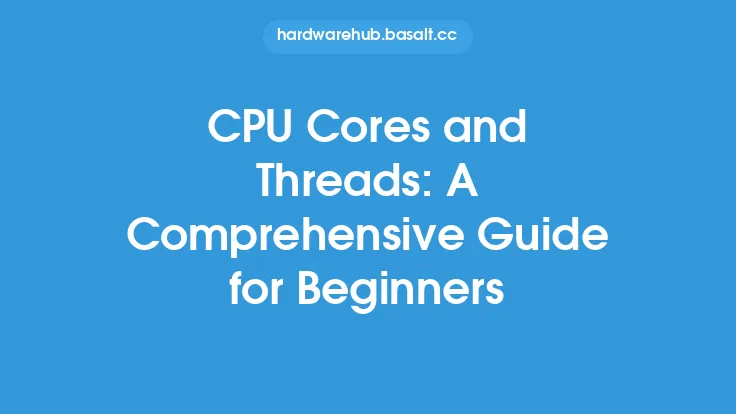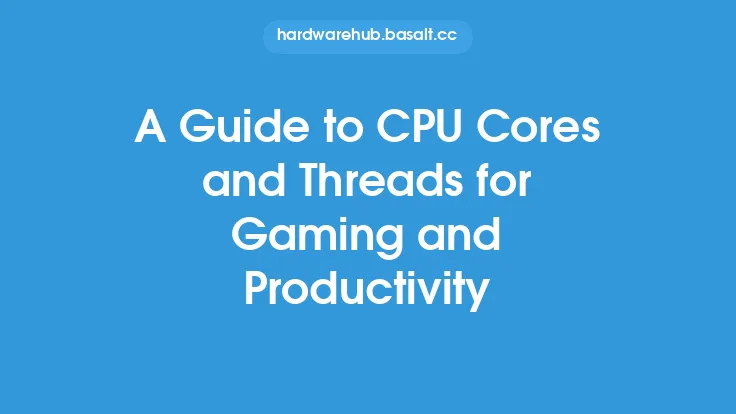When it comes to computer processors, two terms are often thrown around: CPU cores and threads. While they're related, they're not exactly the same thing. In fact, understanding the difference between CPU cores and threads is crucial for getting the most out of your computer's processing power. In this article, we'll delve into the details of CPU cores and threads, exploring what they are, how they work, and why they matter.
Introduction to CPU Cores
A CPU core is the primary processing unit of a computer's central processing unit (CPU). It's the part of the processor that executes instructions and performs calculations. Think of a CPU core as a single "brain" that can handle one task at a time. The core receives instructions, decodes them, and then executes them using its arithmetic logic units (ALUs) and registers. The more CPU cores a processor has, the more tasks it can handle simultaneously, which can significantly improve overall system performance.
Introduction to Threads
A thread, on the other hand, is a separate flow of execution within a program. Threads are like smaller, independent tasks that can run concurrently with other threads. When a program is executed, it's divided into multiple threads, each of which is handled by the CPU core. The CPU core switches between threads quickly, creating the illusion of simultaneous execution. This technique is called context switching, and it allows multiple threads to share the same CPU core.
The Relationship Between CPU Cores and Threads
Now, here's where things get interesting. A CPU core can handle multiple threads, but the number of threads it can handle is limited by the core's architecture. In the past, CPU cores could only handle one thread at a time, which meant that only one task could be executed per core. However, with the introduction of hyper-threading (HT) and simultaneous multithreading (SMT) technologies, modern CPU cores can handle multiple threads simultaneously.
Hyper-threading, introduced by Intel, allows a single CPU core to handle two threads at once. This is achieved by duplicating the core's execution resources, such as registers and ALUs, and allowing two threads to share the same core. Simultaneous multithreading, on the other hand, is a more advanced technology that allows multiple threads to share the same core, with each thread having its own execution context.
How CPU Cores and Threads Work Together
So, how do CPU cores and threads work together to improve system performance? When a program is executed, the operating system assigns threads to available CPU cores. If a core is available, the thread is executed immediately. If all cores are busy, the thread is queued and waits for a core to become available. When a core finishes executing a thread, it switches to the next thread in the queue, creating the illusion of simultaneous execution.
In a multi-core processor, each core can handle multiple threads, which means that multiple tasks can be executed simultaneously. This can significantly improve system performance, especially in applications that are designed to take advantage of multiple cores, such as video editing, 3D modeling, and scientific simulations.
The Benefits of Multiple CPU Cores and Threads
The benefits of multiple CPU cores and threads are numerous. With multiple cores, a system can handle more tasks simultaneously, which can improve overall system performance and responsiveness. Multiple threads can also improve the performance of individual applications, especially those that are designed to take advantage of multiple cores.
In addition, multiple CPU cores and threads can improve system multitasking capabilities. With multiple cores, a system can handle multiple applications simultaneously, without a significant decrease in performance. This is especially useful in modern computing environments, where users often have multiple applications open at the same time.
Conclusion
In conclusion, understanding the difference between CPU cores and threads is crucial for getting the most out of your computer's processing power. CPU cores are the primary processing units of a computer's central processing unit, while threads are separate flows of execution within a program. The relationship between CPU cores and threads is complex, but essentially, a CPU core can handle multiple threads, and the number of threads it can handle is limited by the core's architecture.
By understanding how CPU cores and threads work together, you can better appreciate the benefits of multiple CPU cores and threads. Whether you're a gamer, a content creator, or just a casual computer user, having a multi-core processor with multiple threads can significantly improve your overall computing experience. So, the next time you're shopping for a new computer or upgrading your existing one, be sure to pay attention to the number of CPU cores and threads, as it can make a significant difference in your system's performance and responsiveness.





